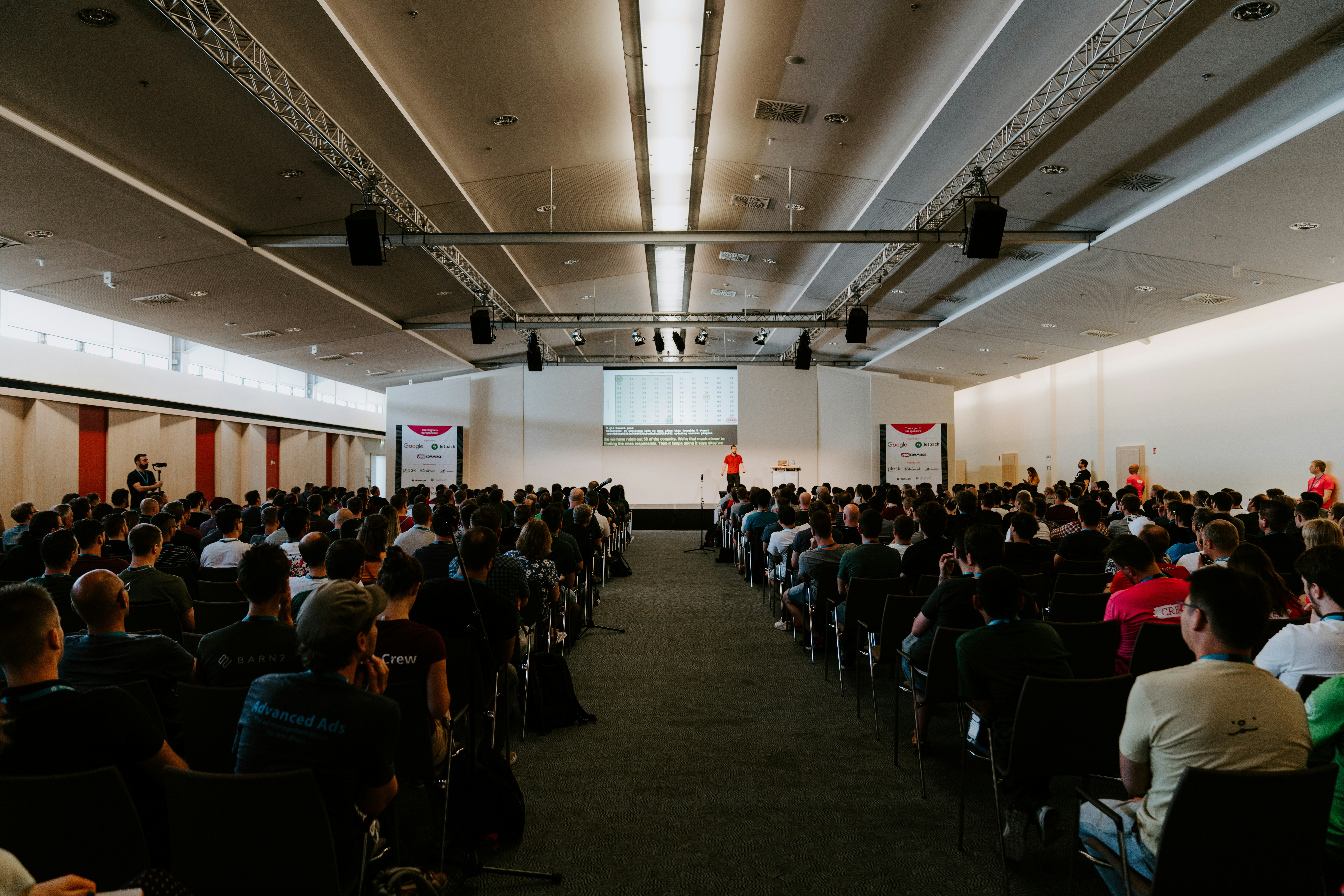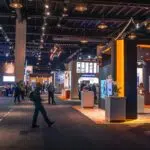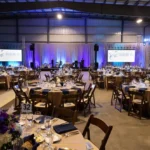Corporate events demand seamless integration of audiovisual (AV) equipment to create an immersive and professional experience. Event planners must choose the right gear to enhance presentations, engage audiences, and ensure smooth execution. This article explores essential aspects of selecting AV equipment, from understanding core needs and visual display solutions to ensuring impeccable audio and integration strategies. It provides guidance on technical requirements and expert strategies based on venue specifics, budget, and presentation goals.
Key Takeaways
- Assess the audience, venue, and presentation objectives before selecting AV equipment.
- Choose visual and audio components based on compatibility, resolution, and clarity.
- Ensure proper integration and on-site technical support for effective AV setups.
- Decide between renting and buying equipment based on budget and frequency of use.
- Conduct pre-event rehearsals and have contingency plans to handle potential AV issues.
Defining Your Core Needs for Corporate Presentation AV Equipment

Begin by assessing your core needs. Understand the audience size and venue constraints such as room layout, lighting, and acoustics. These factors determine whether you need screens, projectors, or speaker systems with adequate power and clarity. For example, a keynote speech with live streaming may require 4 K-capable cameras and robust audio capture equipment. Additionally, set a practical budget that balances quality with cost and considers available technical expertise. For events incorporating virtual participation, ensure the AV setup supports necessary software and network connectivity.
Assessing Audience Size and Venue Specifics for AV Selection
The size of your audience and specific venue features guide your AV system specifications. Large auditoriums might require powerful amplifiers and multiple screens, while smaller conference rooms may only need compact projectors with built-in speakers. Early determination of room dimensions and seating arrangements also assists in planning effective cable management and equipment placement.
Aligning Presentation Goals With Appropriate AV Equipment Choices
Different presentations call for tailored AV equipment. Workshops, product launches, and keynote speeches each have unique requirements. For instance, storytelling sessions may benefit from high-resolution video walls and dynamic lighting, whereas formal speeches require reliable microphones and amplifiers to ensure clear voice delivery.
Establishing a Practical Budget for Your Corporate Event AV
Investing in high-quality equipment—such as 4K projectors, LED screens, and balanced audio systems—can elevate a presentation. However, balance these investments with available resources. In many cases, renting high-end equipment can be a cost-effective solution and offers the flexibility to upgrade for future events.
Identifying Technical Skill Levels for Operating Presentation Systems
Consider the technical expertise available on-site. Some AV systems require advanced calibration; therefore, hiring a trained technician or partnering with an experienced provider can help avoid mishaps. Even user-friendly systems benefit from comprehensive manuals and on-site support for troubleshooting.
Considering Hybrid Elements for Your Corporate Speeches AV Setup
Hybrid events, where both live and virtual audiences are present, require AV systems that integrate live streaming and conferencing software. Additional cameras, live switching devices, and interactive display software ensure that the experience remains professional regardless of the audience’s location.
Selecting Visual Display Solutions for Effective Corporate Presentations
Visual displays are central to engaging presentations. The choice between projectors, LED walls, or interactive displays depends on venue conditions, including screen size, ambient light, and required resolution. A well-chosen visual setup enhances audience engagement and supports the overall message.
Comparing Projectors Versus LED Walls for Corporate Use
Projectors offer versatility and ease of transport, making them suitable for various screen sizes. In contrast, LED walls deliver brighter images and superior color accuracy, which can be crucial in environments with high ambient lighting. The decision hinges on event needs and technical specifications of the venue.
Determining Optimal Screen Size and Resolution for Your Event Space
Screen size and resolution are vital for ensuring visibility. A large conference hall may necessitate a high-resolution 4K LED wall, whereas mid-sized rooms might work well with a smaller projector display. Analyze your venue’s dimensions and visual requirements to choose the correct screen and resolution.
Incorporating Interactive Displays to Boost Engagement in Presentations
Interactive screens enable real-time content manipulation, which is helpful during brainstorming sessions or product demos. These touch-enabled displays promote audience participation by allowing dynamic interaction with the presentation material.
Understanding Lighting Requirements for Clear Visuals at Corporate Events
Proper lighting is essential for clear visual output. Ambient light, glare, and reflective surfaces can hinder image clarity. Effective lighting solutions, including dimming options and blackout curtains, help maintain optimal brightness and contrast for visual displays.
Choosing Presentation Software and Hardware Compatibility
Seamless integration between presentation software and hardware is critical. Verify that the system supports necessary file types and media formats, and that the hardware can render high-definition content smoothly. Compatibility ensures that videos, slides, and interactive elements work without technical disruptions.
Ensuring Impeccable Audio for Corporate Speeches and Events

High-quality audio is fundamental to any corporate event. Selecting microphones, speaker systems, and recording devices should focus on clear voice delivery and preventing background noise. Reliable audio enhances audience understanding and overall engagement.
Picking the Correct Microphones for Speakers and Presenters
Choose wireless lapel or handheld microphones that best suit the event’s dynamics. Ensure they provide clear voice capture while minimizing background noise. Consider the speaker’s mobility and venue acoustics for optimal performance.
Matching Speaker Systems and Amplification to Venue Acoustics
Effective audio distribution relies on appropriate speaker placement and amplification. In venues with challenging acoustics, use powered speakers and amplifiers calibrated to distribute even sound. This ensures every audience member receives consistent audio quality.
Managing Room Acoustics for Superior Sound During Speeches
Controlling acoustics is key to preventing echoes and reverberation. Utilize techniques like strategic speaker placement, acoustic panels, or temporary sound barriers to maintain a professional audio atmosphere during the event.
Options for Recording and Distributing Audio From Corporate Presentations
Recording presentations allows for later review and wider distribution. Integrate quality recording equipment with the sound system so that high-fidelity audio can be used for training, remote dissemination, or archival purposes.
Assistive Listening Devices for Inclusive Corporate Events
Incorporate assistive listening devices to ensure audio clarity for those with hearing impairments. Wireless systems and hearing loop technology can provide personalized audio streams, promoting inclusivity.
Integrating AV Equipment for Seamless Corporate Event Delivery
A synchronized AV system is crucial for a seamless event experience. Ensuring that all components—from audio sources to visual displays—work together minimizes disruptions and enhances presentation flow.
Connecting All Audio Visual Components for Flawless Operation
Use compatible cables, connectors, and adapters (e.g., HDMI, DisplayPort, balanced audio cables) to link devices effectively. Proper interconnectivity reduces signal loss and prevents technical errors during presentations.
Utilizing Control Systems for Simplified AV Management During Presentations
Modern control systems, including touch panels and wireless controllers, simplify the management of AV equipment. These systems allow for quick adjustments and monitoring of multiple AV components, reducing on-site complexity and ensuring smooth transitions during the event.
Live Streaming and Webcasting AV Equipment for Broader Reach
Live streaming solutions enable remote audience participation. High-definition cameras, encoder systems, and dedicated streaming software work together to broadcast the event in real time, making it accessible for global viewers and post-event review.
Ensuring Interoperability of Different AV Gear for Corporate Events
AV devices should support standard communication protocols to ensure they work together on a common platform. Standardized interfaces and pre-event compatibility tests help avoid integration issues.
Cable Management Strategies for a Professional AV Setup
A tidy cable management system enhances aesthetics, safety, and signal integrity. Use cable trays, color-coded connectors, and secure fastening methods to organize cables and simplify troubleshooting.
Sourcing and Managing AV Equipment for Your Corporate Events

Deciding whether to rent or buy AV equipment depends on cost, frequency of use, and future scalability. A well-managed inventory and reliable service providers help ensure that events run smoothly from setup to teardown.
Evaluating Renting Versus Buying Corporate AV Equipment
For occasional high-end events, renting might be more cost-effective, offering access to the latest technology and on-site support. Regular users may find buying equipment more economical in the long run.
Selecting Dependable AV Equipment Providers for Corporate Functions
Choose providers with a solid track record in maintenance, technical support, and flexible rental packages. Reliable vendors simplify logistics and ensure that technical issues are addressed promptly during events.
The Value of On-Site Technical Assistance for Event AV Equipment
On-site technical support is critical for real-time troubleshooting. Having experts available minimizes disruptions and helps maintain a seamless presentation, enhancing overall audience satisfaction.
Pre-Event Checks and Rehearsals With Your Chosen AV Setup
Conduct comprehensive pre-event tests to identify and resolve any issues. Rehearsals ensure all equipment is compatible, system configurations are optimized, and technical staff are well-prepared.
Creating an Inventory of Your Corporate Presentation AV Assets
Maintain an organized inventory that details each piece of equipment, its specifications, and maintenance schedules. This practice aids in budgeting, future event planning, and ensuring no critical equipment is overlooked.
Fine-Tuning Your AV Setup for Successful Corporate Presentations and Speeches
Final fine-tuning is essential for a polished presentation. Strategic equipment placement, rehearsals, and prepared contingency plans all contribute to a glitch-free event.
Strategic Placement of AV Equipment Within Presentation Areas
Ensure that AV components are positioned to provide uniform sound distribution and clear visual access from all angles. Thoughtful placement enhances technical performance and the overall aesthetics of the event.
Conducting Thorough Run-Throughs With Your Presentation AV Gear
Practice sessions help confirm that all equipment functions as intended. Run-throughs allow the team to address last-minute adjustments and ensure a smooth presentation execution.
Preparing Contingency Plans for Common AV Equipment Issues
Develop backup plans such as spare microphones, alternative connection methods, and designated technical contacts. These precautions help resolve issues quickly and maintain the event flow under any circumstance.
Post-Event Review of AV Performance for Future Corporate Events
After each event, review the AV performance to gather insights and identify areas for improvement. Feedback from staff and attendees can guide future equipment choices, system integration, and operational procedures.
Training Staff on Basic AV Equipment Troubleshooting for Speeches
Empower on-site teams by training them in basic troubleshooting techniques. This approach reduces reliance on specialists for minor issues and builds a more resilient event support system.
Frequently Asked Questions
Q: How do I ensure that my AV system can handle both live and virtual audiences?
A: Select equipment that integrates high-quality cameras and streaming software to enable seamless connectivity for both in-person and online attendees.
Q: What are the benefits of renting versus buying AV equipment?
A: Renting offers access to the latest technology and on-site support without high upfront costs, while buying may be more cost-effective for frequent events.
Q: How important is pre-event equipment testing?
A: Thorough pre-event tests and rehearsals are essential to identify and resolve configuration issues and ensure that all equipment functions properly during the event.
Q: Can assistive listening devices be integrated into a standard AV setup?
A: Yes, they can be easily added to provide clear audio for attendees with hearing impairments, thereby promoting inclusivity.
Q: How should cable management be handled for a professional look?
A: Use cable trays, secure connectors, and color-coded systems to keep cables organized and interference-free and ensure a neat setup.
Final Thoughts
A well-crafted AV setup is vital for impactful corporate presentations and speeches. Event planners can deliver memorable experiences by assessing core needs, selecting the right visual and audio components, and ensuring seamless integration. Pre-event checks, strategic placement, and comprehensive contingency plans help guarantee successful events. Embracing the latest technologies and maintaining meticulous standards ensures that every corporate event is executed professionally and precisely.






